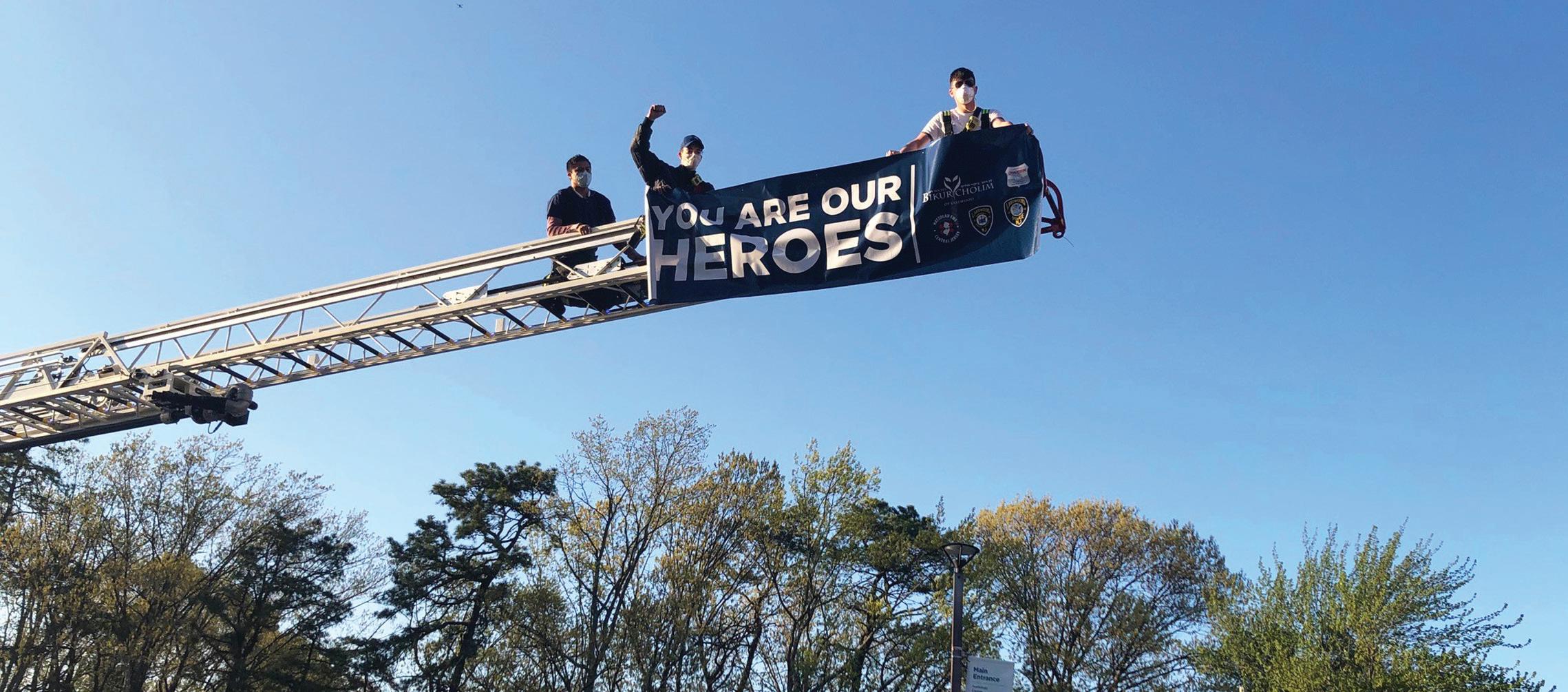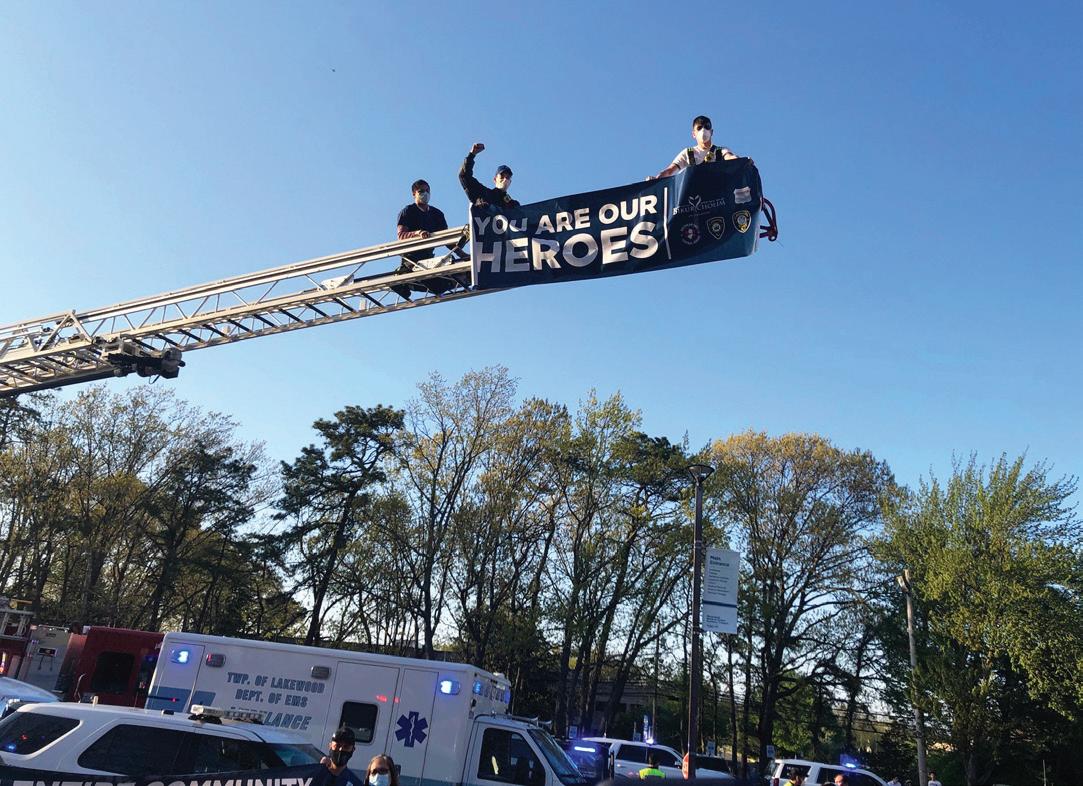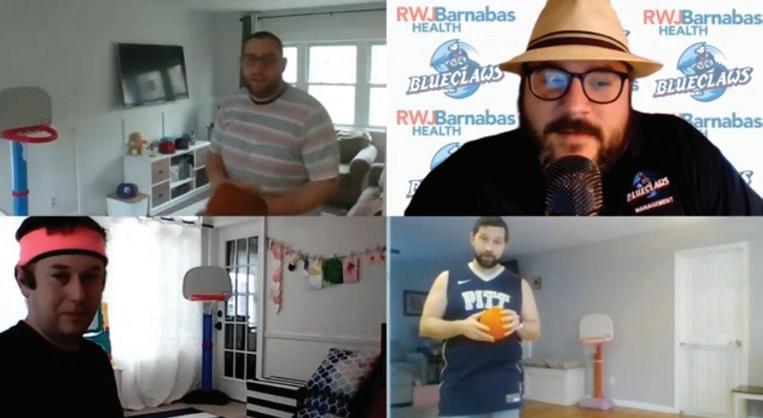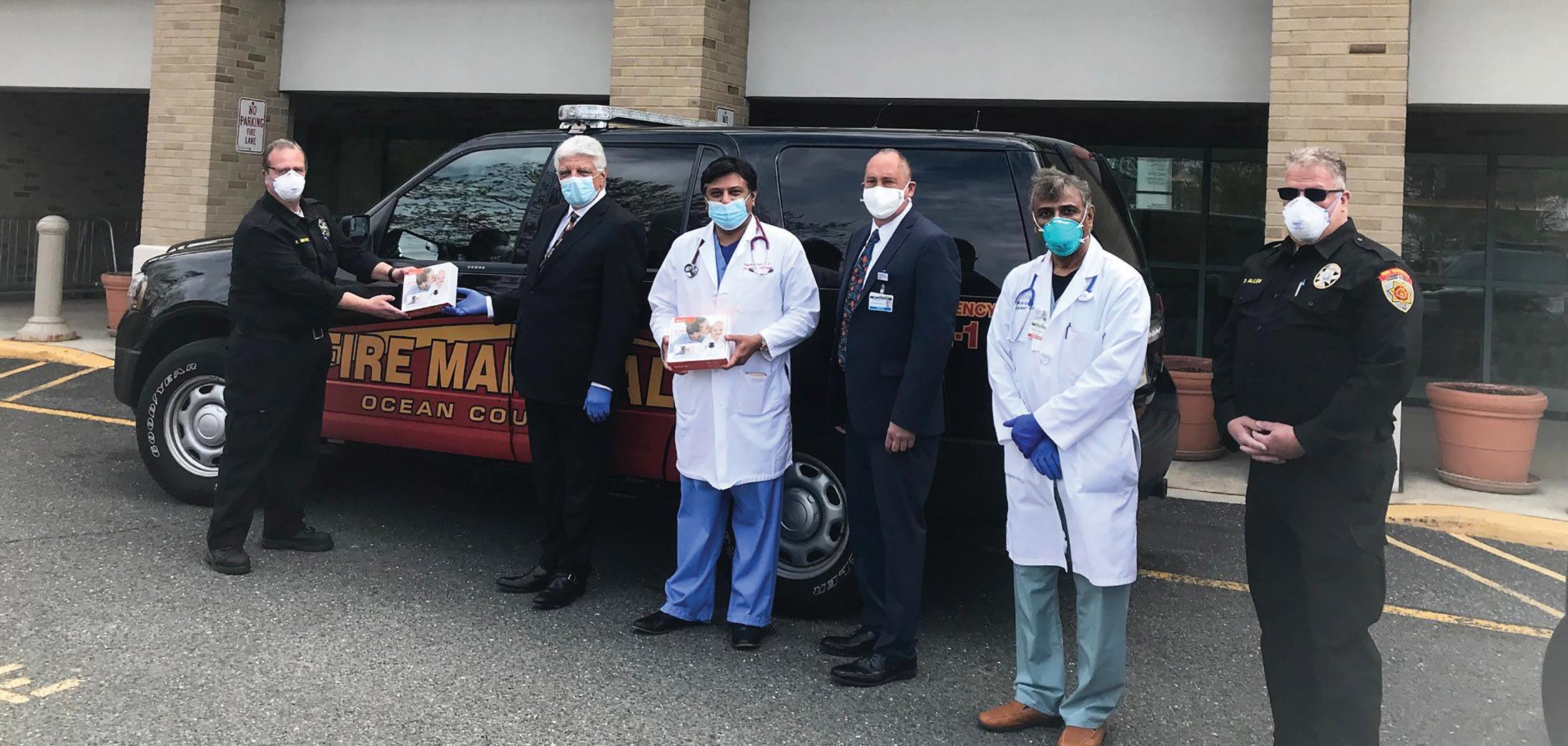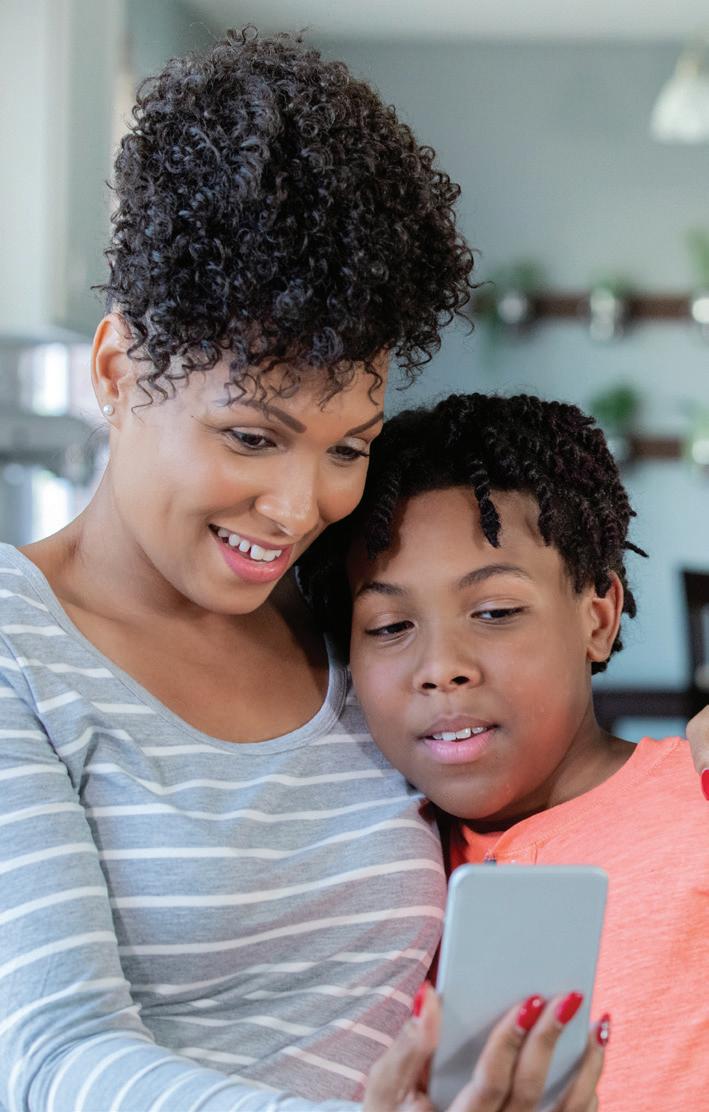
7 minute read
COMPASSION IN ACTION. We don’t
COMPASSION IN ACTION



WE DON’T HAVE SPACE TO TELL ALL OF THE STORIES OF CARE AND COMPASSION WE’VE SEEN IN THESE CHALLENGING TIMES. HERE ARE JUST A FEW.
PREGNANT AND ON THE FRONT LINES
For Monmouth Medical Center Southern Campus (MMCSC) frontline staff ers Jenna Whitman, Physician Assistant Director, and Victoria Belvin, RN, it has been second nature to work alongside their co-workers during the COVID-19 pandemic. Th e only thing that could stop them: the fast-approaching delivery dates for their babies.
Jenna, 32, a Wall resident, has worked in the Emergency Department at MMCSC for nearly eight years. She has a toddler at home and was late in her pregnancy when the crisis began.
“At fi rst it was defi nitely anxiety-provoking, but aft er that you’re like, ‘You know what? Th is is what I signed up for. Th is is what I love to do,’” Jenna says.
“I wasn’t going to jump ship, and neither did anybody else who works at the hospital,” she says. “Everybody was running away from this virus, but we were running right toward it. As


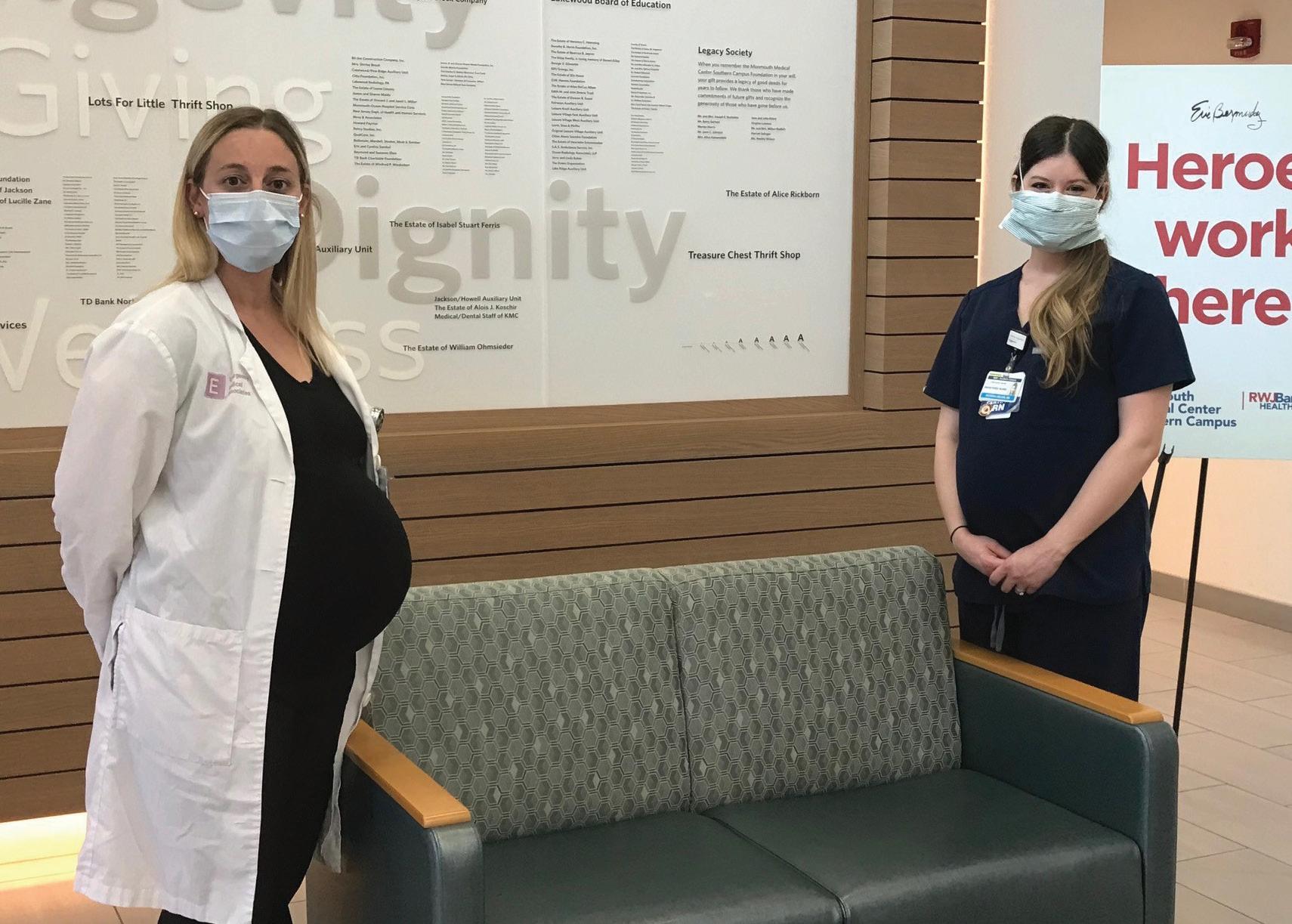
Jenna Whitman, PA, at left, and Victoria Belvin, RN, continued working late into their pregnancies.




scary as it was, that was cool to see.”
Victoria, 29, a Brick resident, usually works in the Endoscopy Suite at MMCSC. With many elective surgeries postponed, she was asked to support the Command Center, the vital center of operations at the hospital since mid-March.
“Most of my loved ones wanted me to stop working,” explains Victoria. “My doctor was nervous because there was no protocol in place with this new virus.” Still, she persevered. “It was scary, but everyone at the hospital was amazing,” she says. Victoria’s baby, her first, was due May 28.
Jenna, whose baby girl was due in late June, acknowledges that there were tough times. “When you’re far along in your pregnancy, you’re barely breathing normally as it is,” she says. “Th en you’re hustling around wearing this N95 mask and you’re wondering how long you can do this.”
Jenna’s husband, Craig, a former Wall police offi cer, got a new perspective on his wife’s work. “All those years, she was scared about what I was doing at work, so it was very eyeopening to see it from the opposite side,” he says. “But I had all the faith in her that she was going to follow her training and be safe. She seemed very confi dent about it.”
Victoria’s husband, Scott Berger, also knew he had a supportive role to play. “As a husband and soon-to-be new father, I felt helpless in being able to keep her safe,” he says. “But I know she has an important job to do. Th ere are a lot of people who need help.”
‘SEEING PATIENTS RECOVER GIVES ME STRENGTH’ AWANI KUMAR, MD,
Pulmonologist and Critical Care, Recovered COVID-19 Patient




“I n the later part of March, I became sick with COVID-19. Th is virus is tough; it made me so weak and tired. However, I was able to manage my illness at home and was able to come back to work aft er more than three weeks.
For COVID-19 outpatients, I advise them to have a thermometer and a pulse oximeter [a small device that monitors the amount of oxygen carried in the body], and check them at least three times a day. Good nutrition and good hydration are very important to help you fi ght the virus. And of course, put yourself in isolation from everyone, including people you live with.
Today, rounding in the ICU and CCU with colleagues, some of whom have also recovered from COVID-19, gives me strength to carry on. Seeing patients recover makes me feel more confi dent by being there and helping them get better. I also saw a few of them who did not make it, and that breaks my heart.
But I want people to have hope. We have an extremely high success rate of treatment for COVID-19 at Monmouth Medical Center Southern Campus. If you have symptoms of COVID-19, come to the hospital for a test and a diagnosis. We will take good care of you.”
‘THE VAST MAJORITY OF PEOPLE GET BETTER AT HOME.’
YISRAEL KADOSH, MD, Cardiologist, Recovered COVID-19 Patient



“A t the beginning of the outbreak, symptoms for COVID-19 varied. It was possible to treat patients with a cough or fever and suspect other ailments. I think that’s how I contracted the virus, early on. I started with myalgias, muscle aches, so I stopped seeing patients and got tested. Days one through seven were mostly muscle aches, then days eight and nine were pretty bad. I had shortness of breath, cough, fever, no appetite and lethargy. I only took Tylenol and Advil, and I kept track of my level of oxygen saturation, which never went too low. On day 10, I started to feel a little better and on days 11 and 12, I felt much better. Following the advice of the infection control specialists, I came back to work, more than 15 days aft er the onset of infection.
I would say to people, first of all, don’t worry. If you have symptoms such as shortness of breath and high fevers, get checked out. In the hospital, we deal with the sickest. But the vast majority of people with COVID-19 get a lot better on their own at home, though it may take as long as two to three weeks.”
Justin on the road to recovery.





SAFE EMERGENCY CARE DURING A PANDEMIC
“D uring the height of the COVID-19 pandemic, our 10-year-old son, Justin, was struck by a car while riding his bicycle,” says Kelly DeLeon of Manchester. “As parents, we were scared not only by the extent of our son’s injuries, but by the prospect of taking him into an emergency room in the midst of an unprecedented health crisis.”
Knowing the excellent reputation of MMCSC, the DeLeons insisted that the EMS driver take Justin there. “Our Emergency Department off ers a child-friendly pediatricdesignated treatment area for children,” explains Jen Lees, MSN, RN, NE-BC, Director, Emergency Care Services.
At the hospital, Justin’s parents saw that every precaution had been taken. “We have a triage tent outside, where patients are quickly screened, and if suspected for COVID-19, led to a designated treatment area,” says Lees.
“From the moment we arrived, each professional treated Justin as if he were their only patient,” Kelly recalls. “Th e registrars, Veronica and Johan, took the time to turn on Cartoon Network for him. Th e ED tech, Lucy, calmly spoke with us, with a soothing smile under her mask. Shannon, a nurse practitioner, gently cleaned Justin’s wounds. One of the registered nurses, Victoria, and Dr. Sree Raja kept us updated. Another nurse, Sara, checked in on Justin oft en and brought him graham crackers and orange juice.”
Justin was promptly taken for X-rays, and it was determined that he had a fractured tibia. Surgeon Christos Plakas, MD, the consulting pediatric orthopedist on call, came to treat Justin and cast his fractured tibia.
“We are still in awe that this team of heroes provided care without ever letting on that, elsewhere in the ED, they were fi ghting COVID-19,” Kelly says. “Our hearts are grateful.”




